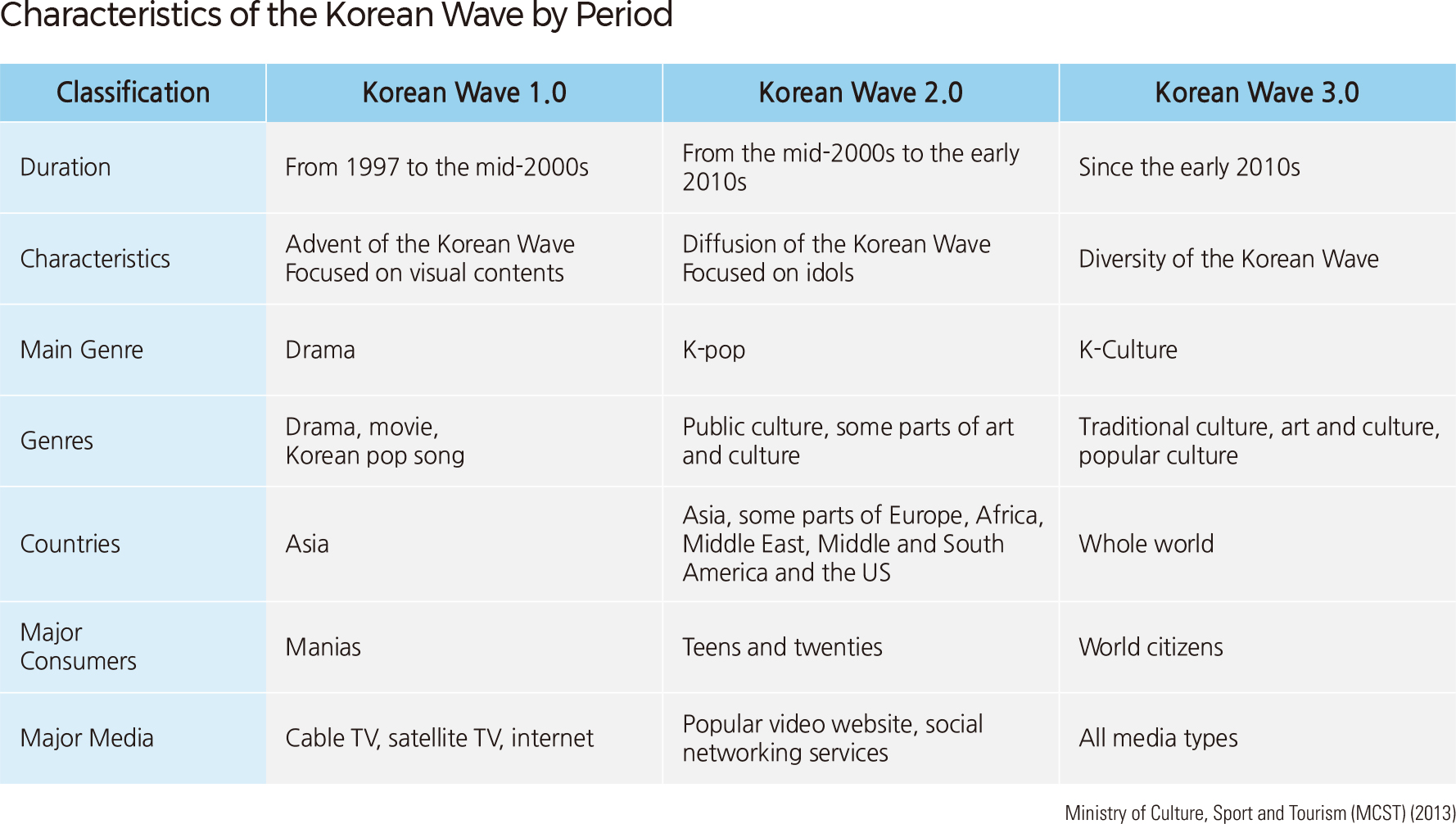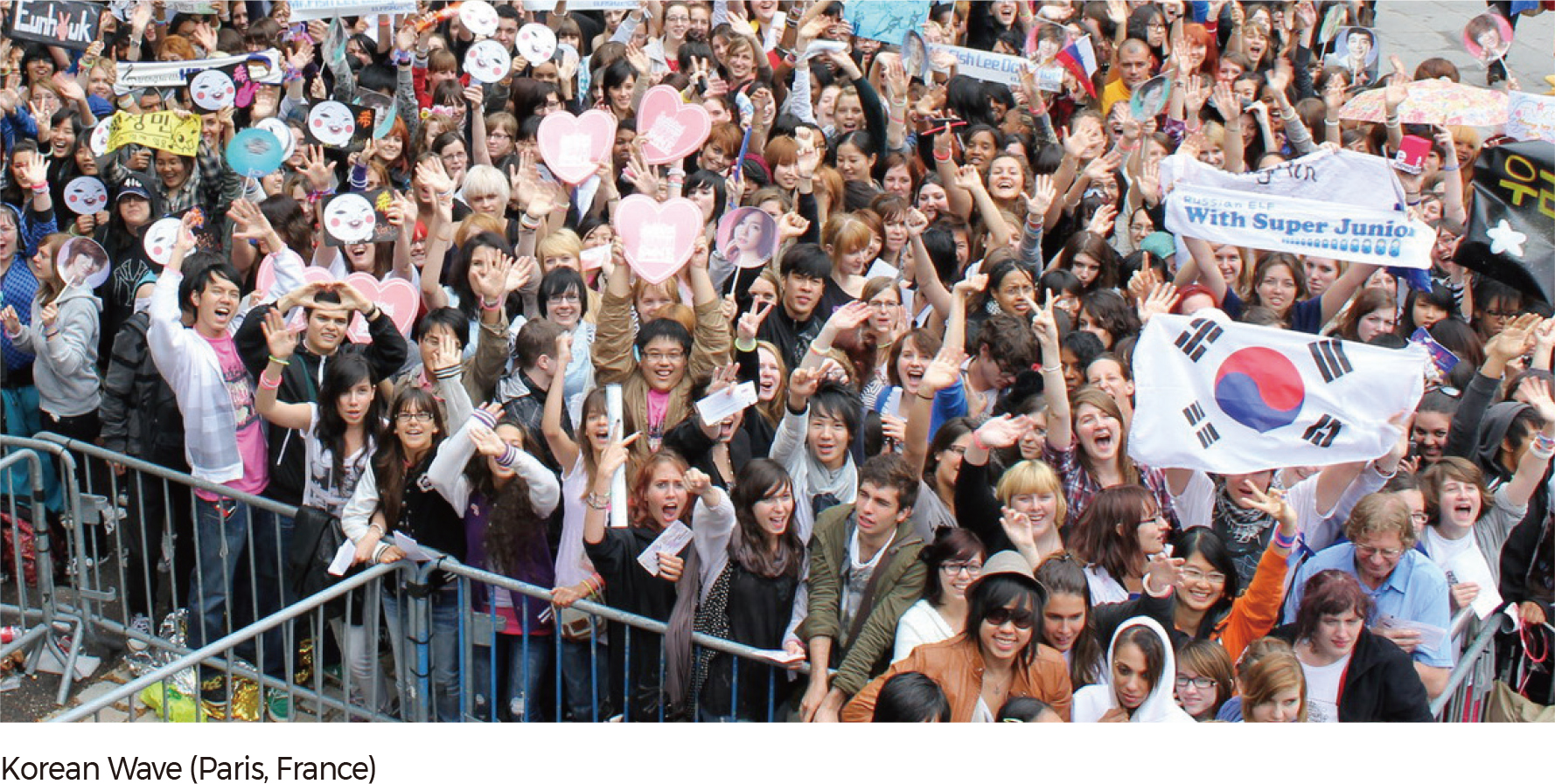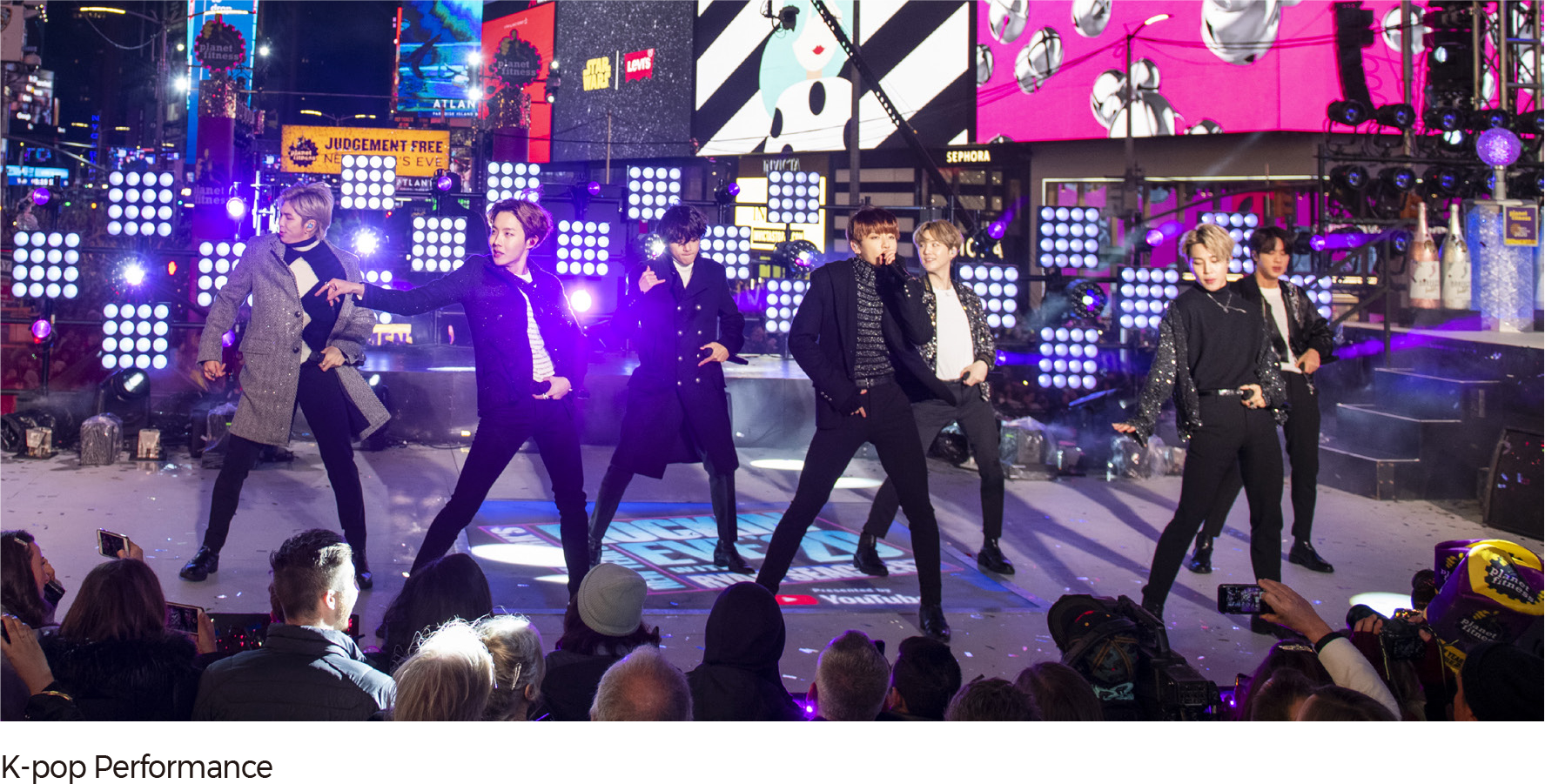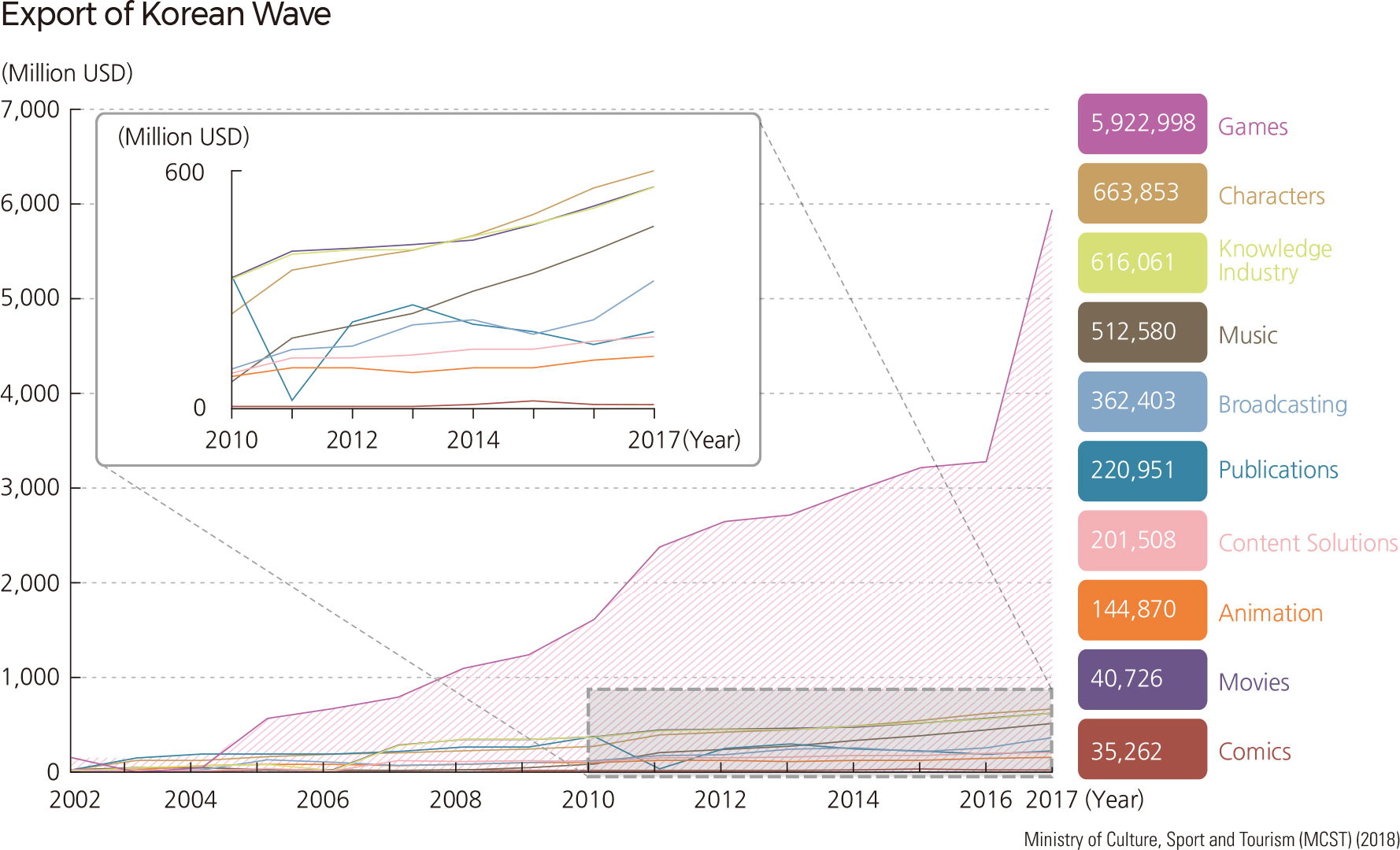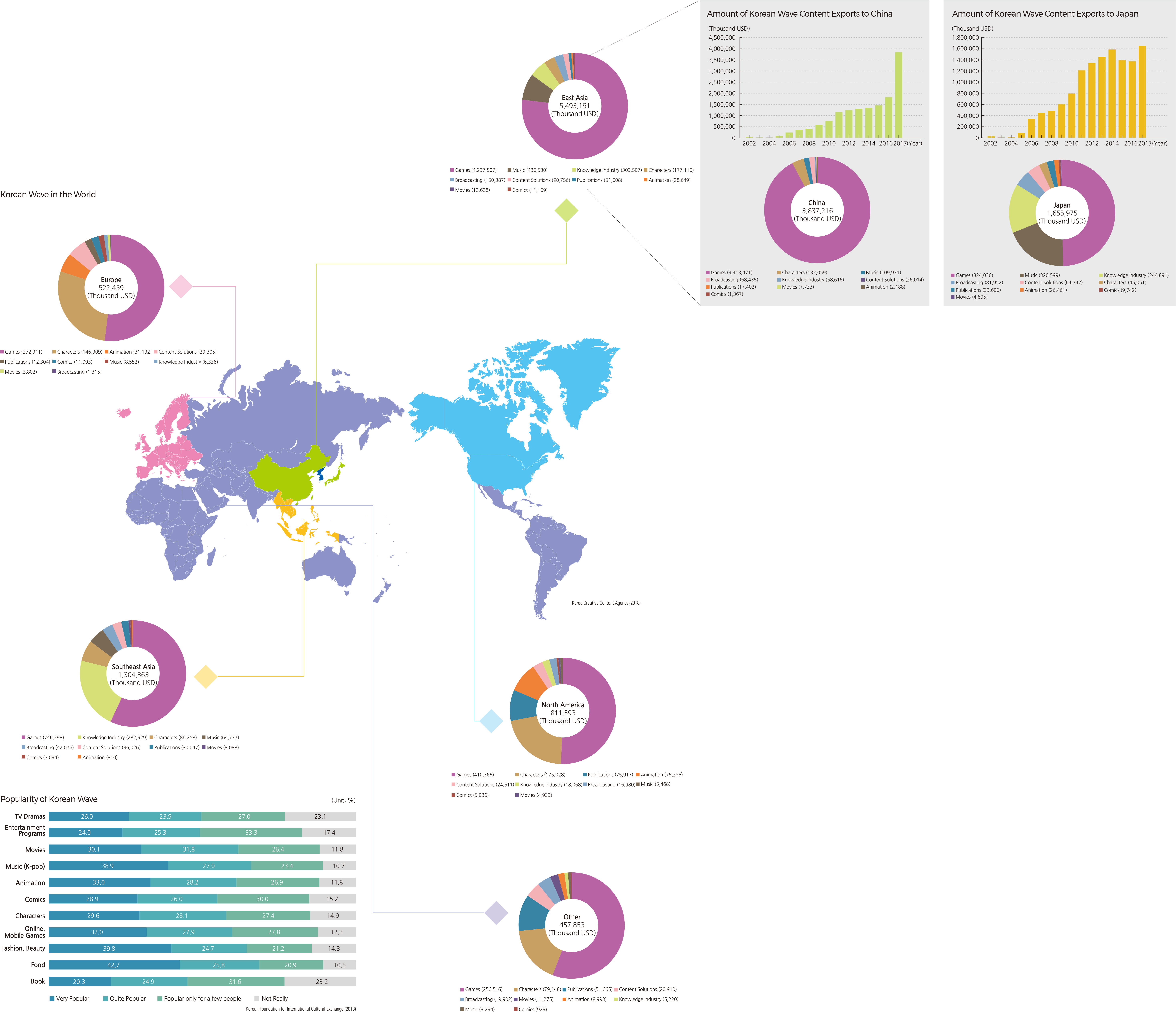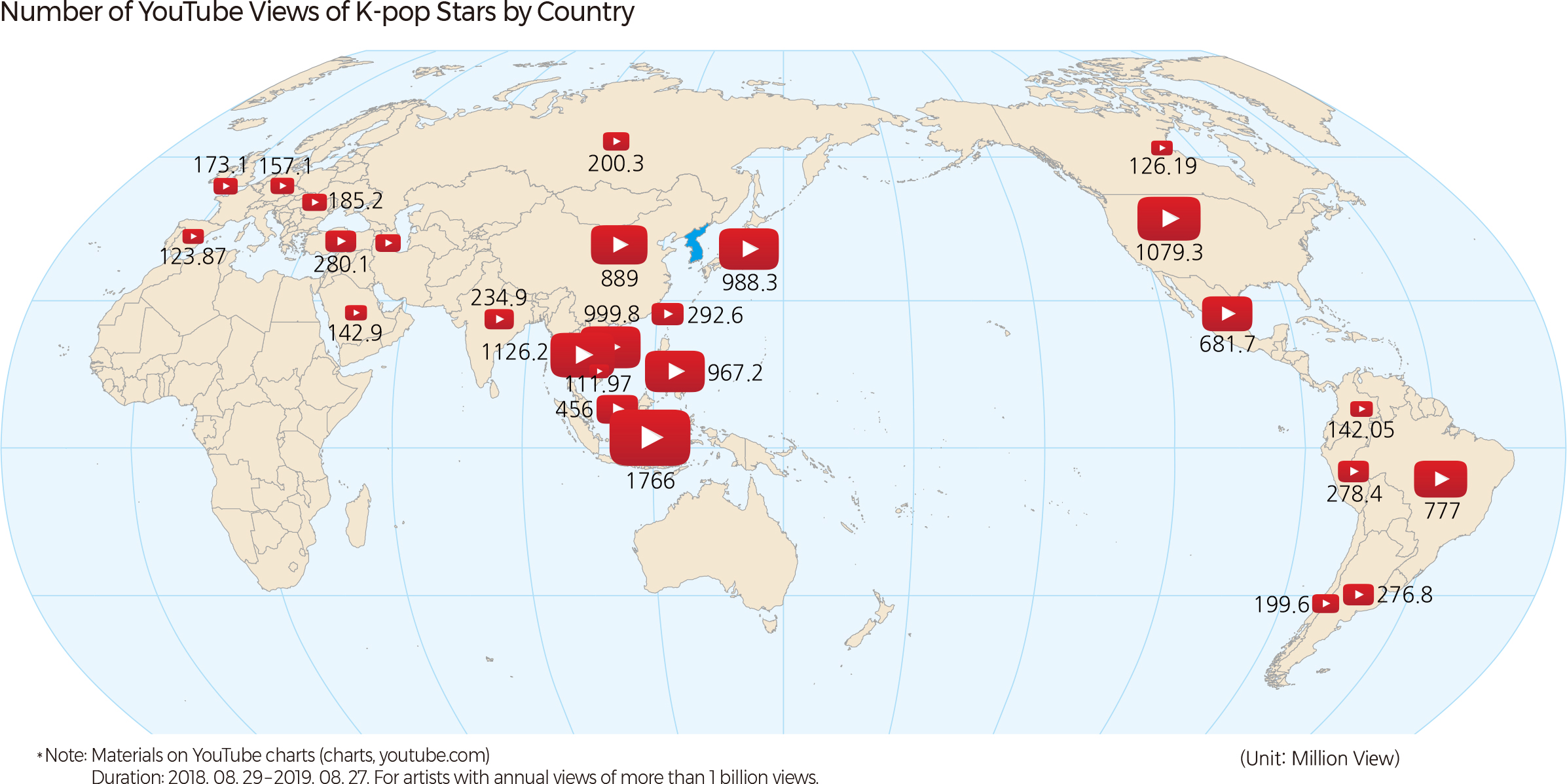English I 2019
In the past, the Korean Wave referred only to Korean enterprises or their products in foreign countries. Since the recent spread of Korean pop culture throughout Asia and across the world, the meaning of the term Korean Wave has come to underscore the increasing popularity of Korean culture. The Korean Wave is now classified into the following three stages:
1. Beginning of the Korean Wave, the Korean Wave 1.0
The origin of the Korean Wave can be traced back to Korean TV dramas in 1997, which were televised by CCTV in China. From then through the beginning of the 2000s, Korean dramas and Korean pop-songs gained popularity in China, Taiwan, and Vietnam. Several dramas that deal with Korean traditional culture found great success in 2002 and 2003. The success of those first Korean Wave cultural efforts laid the foundation for the spread of Korean popular culture to more countries such as Japan and Hong Kong.
2. Diffusion of the Korean Wave, the Korean Wave 2.0
The Korean Wave changed significantly from the middle of the 2000s to the beginning of 2010 when K-pop music rose to global popularity. There are considerable differences between the Korean Wave 1.0 and 2.0, not the least of which include the fact that K-pop and its idols characterize the Korean Wave 2.0. Korean songs spread beyond China, Japan, and Southeastern Asia, reaching Europe and North America. Other characteristics of the Korean Wave 2.0 are its diffusion through popular video websites and social networking services (SNS), the global interest in drama dealing with Korean cultural traditions, and the overall broadening of content.
3. Integration into K-Culture, the Korean Wave 3.0
The Korean Wave 3.0 is represented by the emergence of K-Culture, which covers three domains—traditional culture, art and culture, and general cultural content. The Korean Waves 1.0 and 2.0 represented limited domains that were particularly centered on cultural content. K-Culture, however, covers all three domains in integrative ways. The Korean Wave is no longer geographically limited to Northeast Asia. It has become a global phenomenon.
Cultural content, the economically valuable products that are infused with culturally distinctive expressions of imagination, can be used as an indicator to measure the cultural impacts of the Korean Wave. In Korea, the content industry includes games, characters, publications, broadcasting, music, content solutions, animation, advertisements, movies, comics, and performances. As shown in the graph Export of the Korean Wave, the export by the cultural content industry has increased since 2005.
The game industry has grown dramatically over the past several years, and become a leading export. The exports of character-related merchandise along with products from the television and music industries have increased gradually along with the spread of the Korean Wave, reflecting the consumption of Korean popular culture directly or indirectly through drama, K-pop, and Internet media. The map, The Major Korean Wave, shows that 64.0% of Korean cultural content is exported to East Asia, with 44.7% going to China and 19.3% to Japan. Southeast Asia is a close third, with an import rate of 15.2%, followed by North America (9.4%), Europe (6.1%), and all other regions (5.3%).
The most common image that foreigners associate with Korea is “K-pop,” followed by “North Korea,” “IT industry,” and “Korean food.” In particular, K-pop ranks first in the Americas, Europe, and Southeast Asia. The recent issue of North Korea’s nuclear weapons seems to be the reason why “North Korea” is ranked second.
The popularity of K-pop, which is leading the Korean Wave, is also reflected in YouTube views. As of August 2019, the number of YouTube views on Korea's leading artists in the past year has exceeded 14.7 billion views worldwide. In particular, more than one billion people watch YouTube from Korean artists in countries such as Indonesia, Thailand, the United States, and Vietnam. Recently, various elements of the Korean Wave, such as K-pop, food, fashion, and beauty, have overtaken the world's YouTube content in popularity. |
